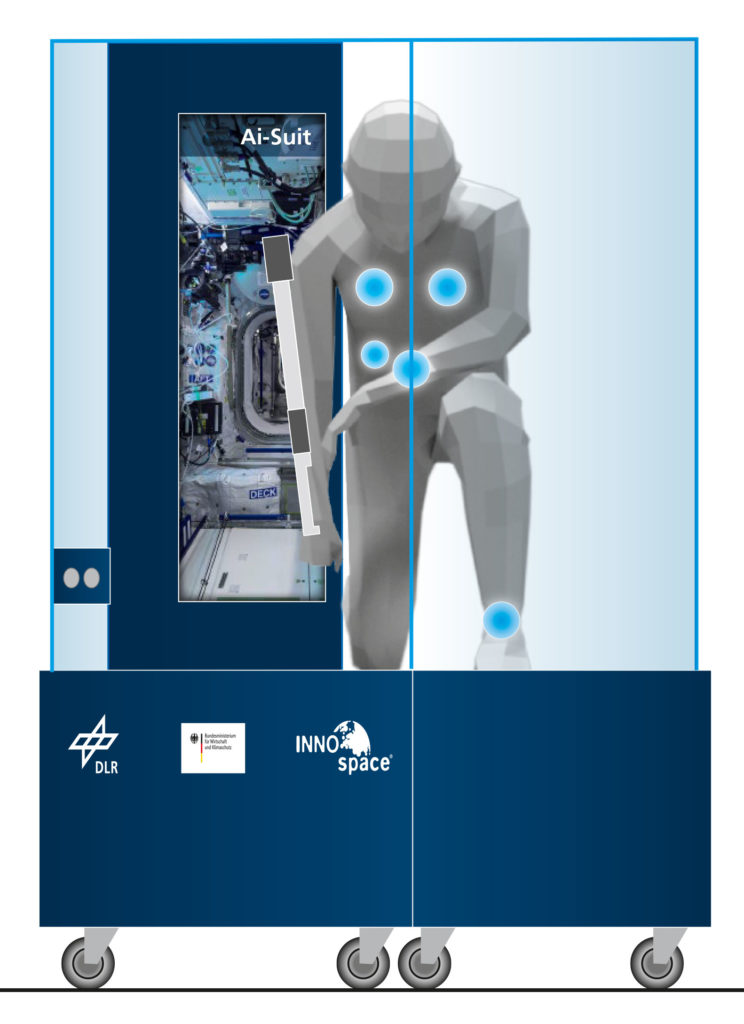AI-controlled exoskeleton and vital parameter measurement for health on Earth and in microgravity
Technological developments from spaceflight are not limited for use in space. Many space innovations have long been making our everyday lives and research on Earth easier. When technology from spaceflight finds applications on Earth, the experts call them ‘spin-offs’ – and this happens quite often. Better engines, robots, sensors and computers are created, for example. Two of these technological developments are presented in the interactive exhibit ‘INNOVital’. Both components were developed as part of the INNOspace Network ‘Space2Health’ from the German Space Agency at DLR.
As part of the ‘NoGravEx’ and ‘GraviMoKo’ projects, an AI-supported exoskeleton is being developed for astronaut training and rehabilitation for people on Earth. With the ‘AI-Suit’, a microelectronic sensor patch system for space suits records the wearer’s vital parameters.
Robin, a life-size figure in a spacesuit equipped with the sensor patch, will be used to display ‘AI-Suit’ in the Space Pavilion at ILA 2024. INNOVital will be extended by a 1:1 scale AI-supported exoskeleton that includes ‘Robin’ and the replica of the sensors. The exoskeleton consists of metal components, electric motors, control elements and cables. In addition, further information about the respective parts of the interactive exhibit is displayed when the visitor selects them by pressing a button.
The Faculty of Engineering at the University of Duisburg-Essen is leading the NoGravEx and GraviMoKo projects, which will develop the exoskeleton and test it under various gravitational conditions. The AI-supported sensor system exhibit is led by the Fraunhofer Institute for Electronic Nano Systems. All projects are part of the INNOspace Network Space2Health.
Links:
German Aerospace Center (DLR)
German Space Agency at DLR, Innovation and New Markets division
E-Mail contact-dlr@DLR.de
